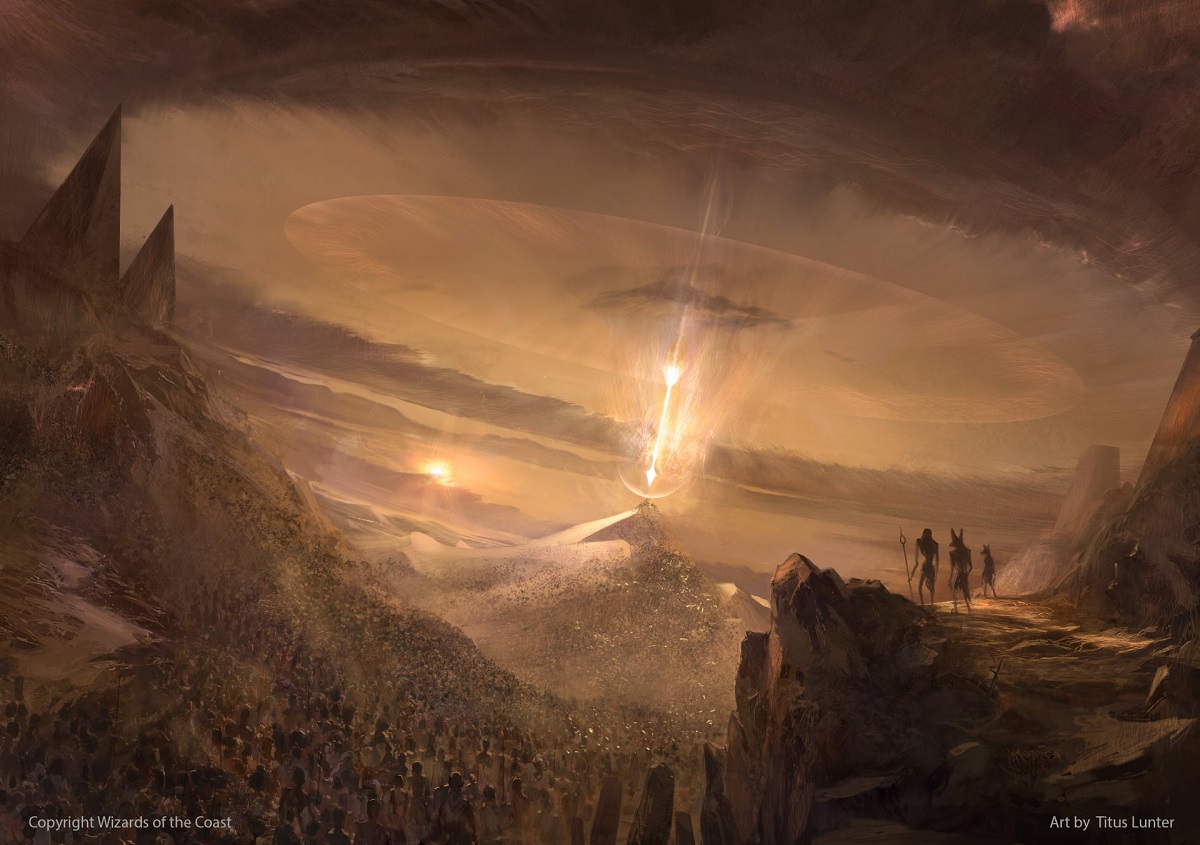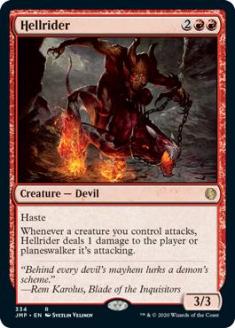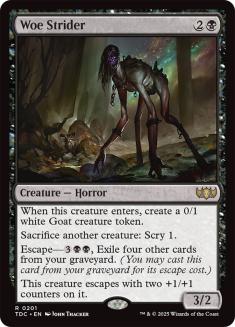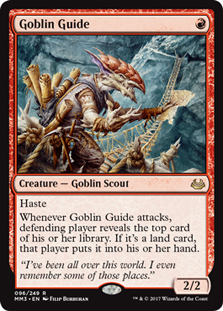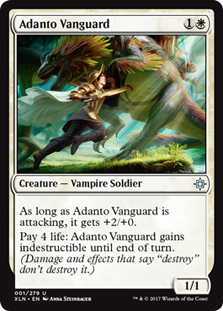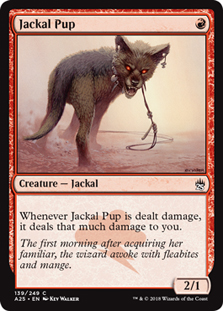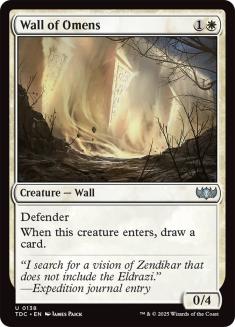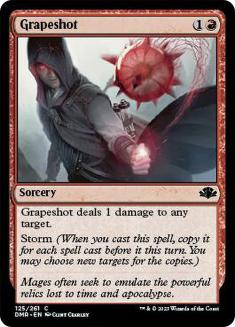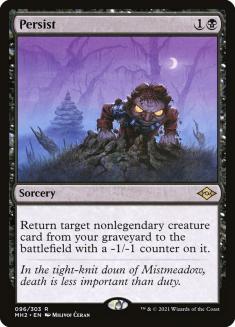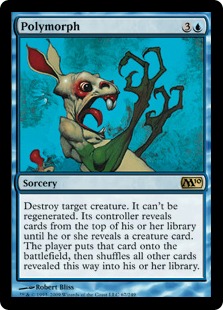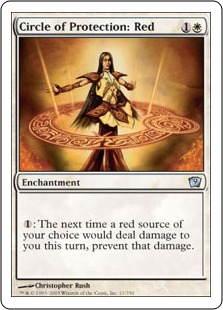It’s snowing again, gamers. I suppose that lends more time to think about Cube. I’m fortunate to say I was able to get some games in with some projects that I’m working on this weekend, and the work I’ve been doing directly applies to today’s topic, one that I’m often asked about. Today I’ll be offering some general notes on how to balance archetypes in Cube.
Two of the more common questions I will ask somebody seeking my advice about a specific Cube are, “What do the games look like?” and “What do you want the games to look like?” There’s a significant segment of the Magic-playing population who will readily tell you that they’re happier drafting than actually playing the games, but I have never and will never find myself in agreement. The games that I aspire to create and recreate are the height of the experience for me, and balance among archetypes is a fundamental aspect of that.
If you’re in the “drafting is better” camp, I’m not here to change your mind. We should all pursue our own joy in our own way. If you’re interested in thoughts on Cube balance from somebody who is more heavily invested in the games, though, then stick around. Let’s build our understanding together.
Defining Balance
First, I think it’s good to define our terms. Balance is a generally well-understood concept, but just in case we’re on different pages, I’ll clarify what I mean. A balanced environment is one where the cards available will theoretically offer every player a comparable chance of winning a given match. The more true it is that skillfully drafting a random seat at the table will translate to winning games, the more balanced a Cube can be said to be.
Balance Through Cube Size
The most common approach to balancing Cube gameplay comes from the fact that most Cubes contain more cards than what the players draft. A traditional eight-player draft involves three packs of fifteen cards for a total of 360 cards, with every digital Cube being 540+ cards and it being very common for those maintaining their own paper Cube to go that size or higher. Even for Cube owners that go smaller than that, they’ll often land on ~400-450 cards. This is partly because a larger size allows for more varied gameplay. Another part relates more directly to balance.
The general idea here is that even if one or more archetypes are considerably more powerful than the other options, you won’t always be able to reliably draft them by virtue of not every card being in every draft. This does technically accomplish the goal of stopping any particular archetype from consistently dominating in a particular Cube environment. I would argue that it does not do much to prop up less supported or weaker archetypes, though, and it in fact this added variance can make the least powerful options in the Cube even weaker with the added burden of variance, but if the power band is relatively flat, this isn’t a huge concern.
Tightening Up
This light-handed approach that takes advantage of added variance for balance clearly works for a lot of players and designers alike. Cube Draft is a significantly popular way to play Magic and with bigger sizes being the most common approach, I won’t yuck the collective yums of advocates of larger Cubes. If you’re a regular reader of my work, though, you know that this isn’t my style.
For eight-player drafts, I strongly prefer to draft with 360 cards, and for fewer players, I like even smaller Cubes. Balancing these smaller environments requires a heavier hand, and that’s the lens through which I’ll be approaching the rest of today’s article. The concepts that I’m about to describe are useful for larger Cubes, but they’re absolutely essential for designing replayable smaller ones.
Defining Archetype Goals
If you want to line up all the archetypes in your Cube side by side and determine how close they are in power level, you’ll need to start by defining and understanding the goals of each archetype. In a very general sense for near any archetype, this will be some combination of “win the game” and “stop the opponent from winning the game,” which sounds pretty abstract but is actually a great place to start a dive into archetype balance.
Aggressive and Combo decks will generally be more on the “win the game” side of things, and Control decks will tend to fall more on the “stop the opponent from winning the game” side. As such, curating controlling options in a Cube by default is less about putting in interactive cards that you want to play with and more about lining them up in engaging ways against the decks that are more actively trying to win the game. Just like Control decks in Constructed metagames struggle when designed without proper format context, Control decks in Cube can only be properly balanced once the more proactive archetypes are clearly defined.
Refining Control in a Cube
Some of this will be defining whether your aggressive and combo decks are creature-based or spell-based, how heavy on planeswalkers you want them to be, and that sort of thing. These metrics will determine the value of Negate relative to Remove Soul in your Cube, but the specific nature of interaction is easy to sort out with small changes.
Determining a desirable volume and efficiency of interaction is much more useful to lock down, as changes on those lines involve much more radical retooling if you miss your mark initially. You’ll understand an environment better by knowing whether it calls for two- or three-mana interaction more than by knowing whether that interaction should be more focused on creatures or noncreatures. To make this determination, I spend some time thinking about fundamental turns.
Determining an Archetype’s Fundamental Turn
I’m borrowing the term Fundamental Turn from an ancient Zvi Mowshowitz article that references cards and formats long forgotten, but is incredibly valuable if translated to today’s sensibilities. The long and short of it is that decks, matchups, and formats are best understood by knowing which turn of the game a given deck intends to execute its gameplan. They used to refer to Modern as a “Turn 4 format” with regard to curating the Banned List, and this spoke to a benchmark for the intended fundamental turn in the average game. In Constructed, knowing the fundamental turn of a format heavily informs what cards and strategies can be viable, though in Cube, understanding the concept of a fundamental turn is another knob we can turn to modify what cards and strategies we can make viable.
To put this in plainer language, you want to ask yourself what turn your proactive archetypes consistently win, given no disruption. I’m not the type to literally math that out, as you get a solid feel for this sort of thing after playing for many years, but some decks are more transparent than others. For example, Splinter Twin combo is absolutely vying to win on Turn 4. An aggressive deck with Hellrider will typically be hoping to close on Turn 4 as well. Keep in mind also that a fundamental turn doesn’t just account for when the game actually ends, but also for a theoretical point of no return. If we’re talking about a red aggressive deck, that Hellrider might not actually end the game on Turn 4, but players will cast it with the intention of putting the opponent into burn range.
Unifying Fundamental Turns
Look at the range of proactive options in your Cube and try to determine what their fundamental turns realistically are, and ideally get them to a place where they’re generally within one turn of each other. There’ll be a bit of a range here for most Cubes, and that’s fine. That’s what we address as we determine the appropriate interaction for a Cube. This phase is mostly for making sure that you’re not trying to mix aggressive decks that can reliably win on Turn 4 with combo decks that are aiming for Turn 6 wins, or the other way around. Timely disruption can make up one turn of difference, but consistently reaching to make up two turns is considerably more difficult. This isn’t the end-all, be-all for what sorts of proactive archetypes can exist in the same Cube, but it is a metric that provides a lot of actionable information.
Once you have a general idea of your Cube’s fundamental turn, this will heavily inform how efficient the interaction in your Cube should be. If you have proactive decks that are vying to win on Turn 4, then it’s likely the case that you’ll want to be using one- and two-mana spells to combat these strategies, and that three-mana spells will often be too slow. I don’t have a broadly applicable equation for this sort of thing, but a good general note is that you need to be disrupting your opponent as they set up, not as they close. You generally can’t just start playing the game the turn your opponent plans to win.
Sidebar: Blue Aggro
This is actually why you’ll regularly see me harp on aggressive blue decks in the digital Cubes. With the size and volume of aggressive options in these Cubes, you see cards like Delver of Secrets acting as either slow aggressive options or weak controlling finishers. Controlling decks will typically seek to win more slowly than proactive decks, but they still have to line up with the fundamental turn of the proactive decks in terms of how their disruption lines up.
Once you’re meeting a format’s fundamental turn through disruption, it becomes really important for your win conditions to be more resilient than the threats that your disruption seeks to answer. If your deck is only competitive with the format on the back of timely Doom Blades, then you’re going to struggle when your win conditions die to those very same removal spells. Which segues us beautifully to our next section:
Determining and Tweaking Archetype Resilience
Once you have an idea of the fundamental turn of your desired archetypes, ask yourself how easy it is to disrupt those archetypes. An aggressive deck featuring planeswalkers and other value-generating cards will be much more difficult to disrupt than one simply casting creatures that attack and block. Recursive creatures like Bloodghast and Woe Strider also require different answers from cards like Goblin Guide, which requires different answers from Adanto Vanguard. This is where we start asking what kind of disruption is appropriate.
In determining a deck’s fundamental turn, we ask how that deck fares while goldfishing, or playing out its hand without an opponent. Now we’re asking what happens when that deck’s plan meets disruption. In a high-power Cube, an aggressive deck should be able to weather some one-for-one removal spells and make up the difference with tools like creature-lands and powerful three-plus-mana cards of its own.
Generally, though, controlling decks will have much more powerful cards once we get to Turn 5, which is expected and totally fine in those high-power environments but bears more consideration in lower-powered Cubes. If the reactive decks have better haymakers and can answer many of the proactive deck’s threats with simple one-for-one spells, then the reactive player doesn’t have much burden beyond hitting land drops to win the average game.
Resilience in Practice
Balancing from here means ensuring that your proactive decks are doing something meaningful through every phase of the game that can’t easily and efficiently be answered on a one-for-one basis. You don’t want so many spot removal spells that the aggressive deck is always off-balance. To the extent that you want the controlling deck to engage in the early turns, it’s still good to give the proactive access to some resilient threats.
Say you’re playing a red aggressive deck against a white controlling deck and you’re on the draw. They open on Thraben Inspector, and your threats are Jackal Pup and Bomat Courier. You probably lead with Jackal Pup, but you’re not thrilled about it. Then your opponent casts Wall of Omens on Turn 2. It’s clear that you won’t be able to win anywhere near the speed of your goldfish. Without some higher-impact cards, you won’t be able to win at all.
As a designer, you don’t want to just give aggressive one-drops a free pass, but you also need some way for the red deck to actually use its cards. Breakers like Equipment make the game described above much more interesting. Our red player can be okay drawing to planeswalkers and big Dragons, but Sword of War and Peace would actually allow that Jackal Pup to be more than wasted cardboard. The game is much more engaging when you have some mix of interaction, in this case blockers, and ways to overcome that interaction, such as Equipment. Pump spells are also an option, but using a Brute Force to punch through a Wall of Omens is a weak move in terms of card economy.
What If? And Then?
Balancing a Cube is a matter of asking “what if” questions, and then more questions about what happens next. Let’s say the red player has that Sword of War and Peace. Protection is one of the least interactive abilities, but our Thraben Inspector player can have access to spot removal to make equipping difficult and/or some amount of artifact destruction. In any situation, I like to try to provide a realistic and consistently achievable way out.
This concept is easier to understand when talking about aggressive decks than combo decks, but the concept is similar. What happens in a game after the combo deck tries and fails to combo off? What kind of secondary plan does the combo deck offer? How much does it tend to lose on a failed attempt?
Storm is often all-in in Cube, seldom getting two chances to go off, though it tends to show up in environments where this isn’t majorly concerning. Persist Combo goes off incidentally with creatures that are generally otherwise good at giving beatdowns. Polymorph typically offers no good backup plans and is easy to disrupt, so it only thrives in environments very light on disruption or heavily skewing the gameplay towards navigating these sorts of combos, while likely eschewing some elements of a more traditional Cube.
Once you equip players with tools to disrupt their opponents as well as tools to fight through that disruption, you start to find that games typically last much longer than your initially established fundamental turn. Of course, balance is achievable in matchups that involve less or even no interaction, though you’ve already done this work in mapping out fundamental turns. If two combo decks trade Turn 4 wins, that’s a balanced matchup, even if many games aren’t satisfying.
Hate Cards
Lastly, I want to touch on hate cards, hosers, whatever you want to call them. These cards are specifically good at the role of punishing your opponent for engaging in a particular strategy. You see them commonly in Cube, and I think that a lot of that is due to how they’ve always been part of Magic. That said, I see the customizability of Cube as a strong incentive to stay away from hate cards. In powered Cubes, some safety valves against the most powerful cards ever printed make sense, but once you scale the power level of a Cube back at all, I see hate cards as the absolute last resort for balance.
Everything in Magic has a fail rate. It’s baked into the core rules engine and resource system of the game. Sometimes you’ll mulligan into oblivion, and sometimes you’ll just draw the wrong number of lands. My personal philosophy is that, for most Cubes, you can curate a more enjoyable play experience by altering the makeup of archetypes that are overperforming than by adding cards that are explicitly hateful of that archetype. Goblin Guide does not require a tool nearly as explicit as Circle of Protection: Red to balance.
A Broader Definition
To take this a step further, my definition of what qualifies as a hate card is likely broader than the average player. I see Wrath of God and other efficient sweepers as hate cards for aggressive decks, particularly in Cubes where the creatures available don’t offer abilities that give them any advantages against sweepers, and especially when the aggressive decks aren’t offered planeswalkers or other value engines to fight through these cards. It’s fair to feature Wrath of God when your aggressive decks offer a consistent fundamental turn of Turn 4, but the further your Cube strays from that, the more sweepers become punishing and uninteresting. Anything that is generally asymmetrical with a low burden to cast requires a considerable amount of attention to stop the games from feeling like Solitaire.
Thanks for reading, and I hope that I’ve offered a good base of understanding for aspiring Cube designers to build more balanced Cubes. I know that my writing today has been more on the abstract side, and I intend to build on this piece in the future as it pertains to more specific environments. Ultimately, balance and satisfying Cube experiences are best achieved through playing games and working with your group on what you all agree your goals are to enjoy your time together, but knowledge of good design fundamentals certainly helps get you there faster.

